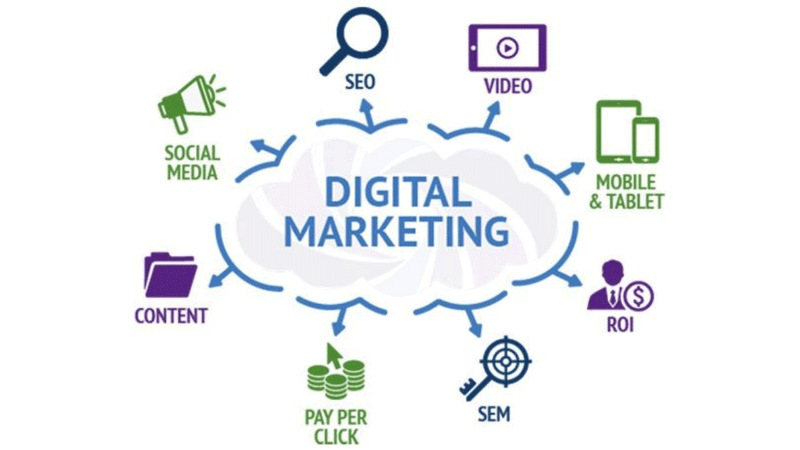Enhance User Experience and Drive Traffic With Responsive Website Design
In today's electronic landscape, where individuals are accessing websites from a plethora of tools, responsive web layout has become extra crucial than ever. With its capacity to adapt and seamlessly readjust to different display sizes, receptive style not only boosts user experience yet likewise drives traffic to your web site.
Why Responsive Internet Design Issues
Responsive website design is an essential element of modern internet development because of its ability to make sure optimal individual experience throughout different tools and screen dimensions. With the proliferation of mobile phones, tablet computers, and other mobile tools, it has ended up being essential for web sites to adapt and offer smooth functionality despite the tool being used.
The main reason that receptive internet style matters is that it enables users to have a regular and enjoyable browsing experience, despite the tool they are using. A receptive website immediately changes its design, layout, and web content elements to fit the screen size and resolution of the gadget, making certain that customers can conveniently communicate and navigate with the site with no aggravation or frustration.
Furthermore, responsive website design also plays a significant role in search engine optimization (SEO) Search engines, such as Google, prioritize websites that are mobile-friendly and responsive in their search results page. By including receptive layout concepts, web sites can enhance their exposure and ranking, leading to increased natural website traffic and possible clients.

Boosting Individual Involvement With Responsive Layout
Maximizing user interaction is a vital goal of responsive style, as it makes certain that users can quickly gain access to and connect with website material on any type of tool. With the raising use tablet computers and smart devices, it is crucial for websites to adapt to different screen sizes and resolutions. Responsive style allows web sites to instantly readjust their layout and material to supply a smooth individual experience throughout gadgets.
Among the primary methods receptive style improves individual interaction is by minimizing tons times. With a receptive web site, individuals don't have to wait for separate mobile variations to lots, causing quicker access to content. This improved speed brings about greater customer satisfaction and urges them to invest even more time on the site.
Additionally, receptive layout improves individual engagement by improving navigating and interface (The Ad Firm digital marketing). When a web site is developed responsively, buttons and food selections are maximized for touch interactions, making it easier for customers to navigate and interact with the site on their mobile tools. This user-friendly and user-friendly experience keeps individuals engaged and urges them to explore even more of the site
Furthermore, receptive design enables better web content exposure and readability. By adjusting the design and typeface sizes to various gadgets, receptive web sites ensure that customers can quickly comprehend the web content and check out. This boosts individual involvement by minimizing the need for scrolling or zooming to read the message.
Enhancing Internet Site Web Traffic With Responsive Website Design
With the growing popularity of smart phones, having a web site that is receptive to different screen dimensions and resolutions is essential for driving boosted website traffic. In today's electronic landscape, customers are accessing websites from a variety of devices such as mobile phones, tablets, and computer. Each of these gadgets has various screen sizes and resolutions, and if your web site is not created to adjust to these variations, it can result in a bad individual experience and a loss of prospective web traffic.
Responsive website design ensures that your web site looks and operates ideally throughout all gadgets. By utilizing versatile grids, fluid photos, and media questions, receptive style enables your website to instantly readjust its navigating, content, and format to fit any kind of screen dimension. This suggests that individuals will have a smooth browsing experience no matter whether they are utilizing a huge desktop computer or a small smart device computer.
Trick Aspects of Effective Receptive Style
Efficient receptive design integrates numerous crucial elements that make certain a seamless individual experience throughout various devices. This permits content to be presented in a visually attractive and understandable way on any kind of tool.
Another essential aspect is media questions. These permit designers to apply different designs and layouts based on the qualities of the individual's tool, such as display dimension and alignment. By utilizing media queries, designers can enhance the presentation of material for every gadget, making certain that it is conveniently accessible and readable.
Responsive images are also essential in efficient responsive design. Images that are too large can slow down web page lots times on smart phones, while photos that are also little may appear pixelated on larger screens. By making use of strategies such as receptive picture resizing and lazy loading, designers can guarantee that images are suitably sized and maximized for each and every gadget.
Finally, effective responsive layout entails a mobile-first technique. This implies developing and prioritizing material for smart phones initially, and after that improving the design and expanding for bigger screens. This approach makes certain that one of the most essential web content is quickly available on smaller sized screens, while still providing an abundant experience on larger tools.
Finest Practices for Executing Receptive Web Layout
Executing receptive website design needs careful factor to consider of various ideal methods to image source make sure an optimum user experience across different gadgets. When applying responsive internet design., right here are some key finest techniques to comply with.
To start with, it is important to focus on mobile users. With the boosting dominance of mobile tools, developing for mobile-first has actually become necessary. Start deliberately for smaller sized screens and then considerably boost the layout for larger displays.

Another vital finest technique is to enhance images for various screen resolutions. Big images can reduce down the loading time of More Help your web site, especially on mobile phones with slower connections. Usage responsive pictures that can be resized based upon the gadget's display resolution to improve efficiency.
Additionally, examination your website on different tools and screen dimensions to ensure a constant and smooth experience. There are numerous testing devices readily available that can help you recognize any problems and make essential adjustments.
Finally, focus on usability and availability. Make certain that your site is simple to browse, with clear and concise material. See to it that your site is obtainable to individuals with impairments and complies with access guidelines.
Conclusion
In final thought, responsive internet design plays a crucial function in enhancing customer experience and driving web traffic to websites. By embracing responsive style principles, web sites can guarantee optimum seeing experiences throughout different tools, leading to website design company websites enhanced customer interaction.
Maximizing individual involvement is an essential objective of responsive style, as it ensures that individuals can conveniently access and connect with site web content on any gadget. Receptive design allows web sites to automatically change their format and content to offer a smooth user experience across gadgets.
In addition, responsive style improves customer engagement by enhancing navigating and customer interface.Receptive images are likewise critical in effective responsive style. By embracing receptive layout principles, web sites can make certain ideal seeing experiences throughout various devices, leading to raised user interaction.